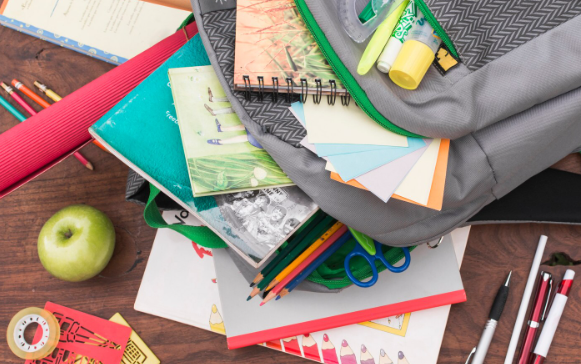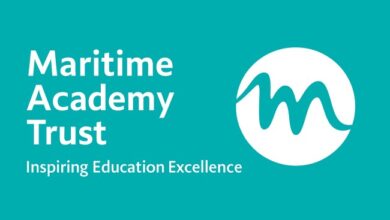Back-to-School Essentials: Choosing the Right Educational Supplies for Every Age

As another school year approaches, parents everywhere begin the familiar ritual of back-to-school shopping — ticking off lists, comparing options, and ensuring every pencil, notebook, and backpack is in place. But while technology continues to reshape classrooms, one thing hasn’t changed: the importance of well-chosen educational supplies. From colourful crayons in early learning to ergonomic stationery for teens, the right tools not only support study but also inspire confidence and creativity at every stage of a child’s journey.
Here’s how to choose educational supplies that grow with your child — practical, durable, and designed to make learning a joy.
Early Learning (Ages 3–7): Building Curiosity Through Play
The early years are about discovery — textures, colours, and creativity all shape how young children learn. At this stage, educational supplies should be tactile, engaging, and safe.
- Writing and Drawing Tools:Jumbo pencils, triangular crayons, and washable markers help develop grip strength and fine motor skills. Look for non-toxic, easy-to-hold options that encourage early confidence.
- Notebooks and Exercise Books:For preschool and early primary, large-lined or dotted notebooks support letter formation. Some include handwriting guides to reinforce spacing and consistency.
- Creative Materials:Glue sticks, safety scissors, felt-tip pens, and coloured paper turn learning into hands-on exploration. Creativity at this age fosters problem-solving later on.
- Organisational Items:Brightly coloured folders, lightweight backpacks, and name labels make tidying up fun and teach early responsibility.
Parents should prioritise materials that encourage imagination and sensory development. Sustainability also matters: eco-friendly crayons made from soy wax or recycled paper sketchbooks reduce waste while introducing young learners to conscious consumption from the start.
Primary School (Ages 7–11): Organisation Meets Independence
By primary age, children begin developing study habits and a sense of ownership over their work. Educational supplies should now support organisation, concentration, and creativity in equal measure.
- Stationery:Standard pencils, handwriting pens, sharpeners, and highlighters form the backbone of this stage. Mechanical pencils and erasable pens can make corrections less stressful and keep work tidy.
- Notebooks and Folders:Exercise books with sturdy covers and margin lines help pupils take structured notes. Colour-coding by subject encourages organisation — a skill that becomes increasingly valuable later.
- Maths and Science Tools:Rulers, geometry sets, and early calculators allow children to engage confidently with numbers. Durable, easy-to-read markings and rounded edges are ideal.
- Art and Project Supplies:Watercolour sets, craft paper, and glue encourage creative exploration across subjects. Choose non-toxic, refillable options for sustainability.
Ergonomics start to matter here — pens with soft grips, lightweight backpacks with padded straps, and properly sized scissors reduce strain during long school days. Parents can also look for recycled or FSC-certified paper products, helping children connect environmental awareness with daily learning.
Secondary School (Ages 12–16): Precision, Performance, and Personality
As workloads grow and subjects diversify, secondary students need educational supplies that balance practicality and self-expression. Quality and durability take priority over quantity.
- Writing Tools:A good-quality fountain or rollerball pen promotes neater handwriting and longer note sessions. Pair with refillable cartridges or ink converters to reduce waste.
- Organisation:Binders with dividers, index tabs, and expanding folders keep assignments tidy. Planners or bullet journals help with time management, encouraging accountability and focus.
- Technology and Accessories:At this stage, digital and traditional tools work side by side. A reliable scientific calculator, USB drives, and noise-cancelling earphones complement notebooks and textbooks.
- Backpacks and Carriers:Ergonomic bags with padded straps and laptop compartments protect both posture and equipment. Reinforced stitching ensures longevity through heavier loads.
A sense of identity emerges during this stage, so allow students to choose colours, patterns, or materials that reflect their personality — it builds enthusiasm and pride in their learning tools. Sustainable choices remain key: refillable pens, recycled paper, and durable metal rulers reduce long-term waste and cost.
College and Beyond: Quality, Minimalism, and Efficiency
For older students, educational supplies shift from guided learning to self-management. Function and design merge into a toolkit for efficiency and focus.
- Premium Stationery:A well-balanced pen, smooth-paper notebooks, and quality folders enhance productivity during lectures or study sessions. These are long-term investments — items that should last through multiple semesters.
- Digital Integration:While laptops and tablets dominate, many students still rely on traditional note-taking for retention. Hybrid learners may prefer a mix of digital note apps and classic exercise books for concept sketching or brainstorming.
- Ergonomic Accessories:Adjustable laptop stands, compact desk lamps, and supportive chairs help maintain comfort during long study hours — an often-overlooked part of educational success.
- Sustainability in Focus:Recycled stationery, biodegradable pens, and reusable water bottles help reduce waste. A minimalist approach — buying fewer, higher-quality items — supports both learning and the planet.
At this stage, investing in dependable, ethically made supplies signals maturity and self-respect. They also reflect a shift from dependency to autonomy — students curating tools that fit their individual study habits and aspirations.
The Value of Quality: Motivation Through Materials
Good-quality supplies do more than last longer — they enhance motivation and performance. There’s a psychological effect to using well-made tools: neat handwriting feels satisfying, clear notes boost confidence, and organised materials make studying more productive.
For younger children, bright colours and fun textures encourage engagement. For teenagers and adults, premium materials create a sense of professionalism and focus. When students take pride in their tools, they naturally take pride in their learning.
Moreover, sustainable and ergonomic educational supplies teach responsibility — both toward one’s body and the environment. A sturdy backpack prevents back strain; refillable pens and recycled notebooks reduce waste. These small decisions reinforce life lessons in mindfulness, care, and accountability.
Making Smart Back-to-School Choices
The best educational supplies balance practicality, comfort, and sustainability. Parents should look for products that adapt to their child’s stage of development while reflecting values like durability and eco-consciousness.
A few simple rules make the process easier:
- Buy fewer, better items rather than bulk packs of disposable ones.
- Prioritise ergonomic design for tools used daily.
- Introduce children to sustainable options early.
- Encourage independence by involving them in choosing their materials.
Every backpack, pen, and notebook is more than a purchase — it’s a small investment in curiosity, confidence, and lifelong learning.



